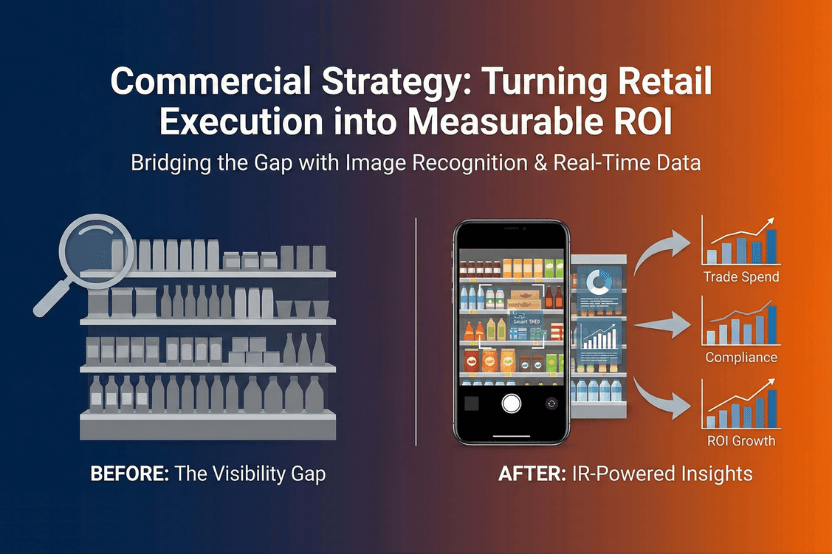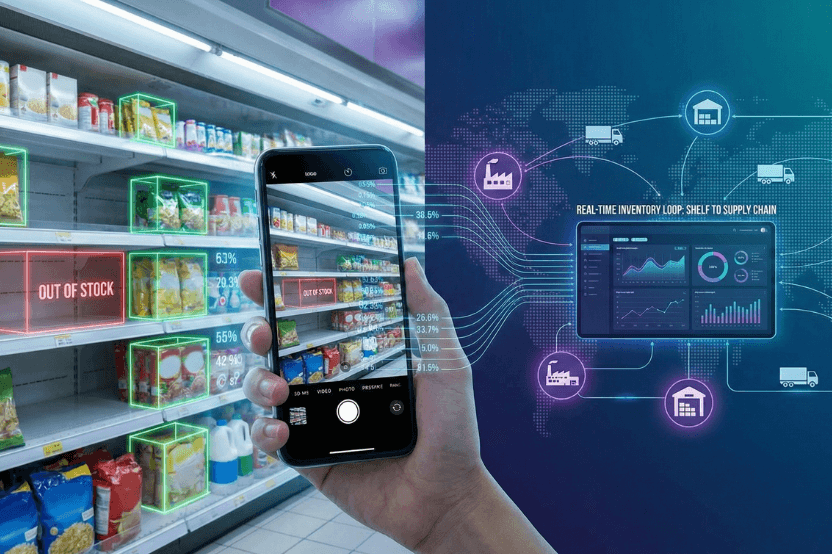Competition in the retail sphere is fierce. So to ensure that products stand out on the shelves, retailers and brands pool a lot of time and resources into developing effective product placement strategies.
Retailers and the experts entrusted with overseeing product placement, i.e. Field Marketing Agents (FMAs), can waste their promotional efforts if they don’t have adequate visibility across all CPG (Consumer Packaged Goods) locations.
Poor retail planning, brought on by poor shop floor visibility, causes a rise in out-of-stocks and low-shelf availability, and as a result, consumer trust in brick-and-mortar retail can start to decline. In fact, a study by Retail Insight found that 53% of UK consumers believe that low shelf availability of products has gotten worse since the start of the COVID-19 pandemic and four-in-ten people surveyed noted that the problem is more of an issue with brick-in-mortar stores than online retailers.
Planograms are a crucial tool in maintaining optimal stock levels in CPGs. Planograms are diagrams of a retail location that FMAs and retailers use to assess the compliance of in-store displays, product placement on shelves, and marketing materials.

Planograms are predominantly completed through manual processes (i.e. human beings physically checking items, displays and marketing materials). Yet, according to Cognizant research, compliance with shelf-level planograms is often lower than 50%.
Traditional image recognition (IR) tools can be deployed to rectify inconsistencies. However, IR tools can be costly, laborious to use, incapable of scaling efficiently, and frequently provide inaccurate results.
At Neurolabs, we understand the challenges of planogram compliance, retail execution and shelf auditing. That's why we’ve created cutting-edge technology that’s reliable, accurate, fast, scalable and cost-effective!
In this article, we will outline how the future of retail shelf auditing hinges on updating image recognition solutions to incorporate Synthetic Computer Vision and Synthetic Data . We'll also explore how our Neurolabs’ Zero Image Annotations (ZIA) technology can be integrated with your existing system, without laborious onboarding and time-consuming data labelling. This means field reps can continue using their current solution, while our API can be connected to business intelligence and data visualisation tools to help FMAs and CPGs track KPIs and other product-related insights.
What is Synthetic Computer Vision?
Synthetic Computer Vision (SCV) is a type of machine learning computer vision model that is able to process, visualise and identify a real-world object from just a small sample of digital photos, making its learning algorithms far more straightforward and fast to train.
SCV is powered by Synthetic Data which comprises of computer-generated images and 3D models. Traditionally, image recognition tools use 'real data,' which describes a bank of information consisting of thousands of product photos taken in different lighting conditions, angles, positions etc.
Naturally, the process of gathering enough real data to optimise IR tools takes hundreds of hours to execute and organise. In contrast, synthetic data generates a greater pool of more diverse data in hours and provides a higher degree of product detection accuracy for FMAs. It also removes the need for FMAs to physically take pictures of SKUs to upload and train the IR algorithms.
Why Synthetic Computer Vision is the Future of Retail Shelf Auditing
FMAs are often tasked with visiting over a dozen store locations in a single working day. In many instances, they will have only a few minutes at each location to check that the products they’re auditing are readily available and displayed optimally. Due to the time pressures of an FMA’s job, the speed, efficiency and accuracy of their image recognition software is vital, as CPGs brand’s reputation is reliant on FMAs being their eyes and ears on the shop floor.
But, more than anything, FMAs need to be able to go into a store, take a picture, and immediately receive feedback from their FMA software to get instructions on the best course of action. They don't have time for errors or to make manual adjustments within their existing IR software.
This is where companies like Neurolabs can help. We deploy reliable image recognition technology that enables speedier auditing execution and a higher degree of planogram compliance accuracy due to the technology’s ability to provide consistently high object detection accuracy rates.
How Neurolab's ZIA (Zero Image Annotations) technology works
Neurolabs’ ZIA (Zero Image Annotations) is an SCV solution trained to detect SKUs in numerous virtual settings (sub-optimal shop lighting conditions included) to ensure that FMAs can maximise every store location visit.
ZIA does exactly what it says on the tin: it does away with the necessity for real data and manual annotations (as required with conventional IR solutions), drastically reducing the amount of human labour needed to maintain planogram compliance.
Our ZIA technology is trained in a virtual environment using synthetic data. As a result, this allows our solution to scale in complexity as your SKU inventory expands. For instance, it can recognise older iterations of packaging design as well as updated packaging. So, if you are an FMA checking on a range of promotional materials, our technology can keep up with your compliance needs.

How Neurolab's ZIA drives the future of retail shelf auditing
Neurolabs also offers a high degree of flexibility with existing IR solutions, as we also provide customers with JSON files, i.e., the raw SKU data. The plug-and-play nature of Neurolabs’ ZIA solution allows companies to maintain the flexibility of defining their own KPIs to suit their brand objectives.
In addition, as Neurolab’s technology is easily integrated into existing Sales Force Automation (SFA) platforms it also allows FMAs and retailers to eliminate the lengthy onboarding or training processes required to get all agents up to speed with a new tool.
Uploading and processing images via the Neurolabs platform only takes between 4-6 seconds. This is highly useful, as FMAs generally only have around three minutes to complete their compliance checks before having to move on to their next location. With Neurolab's ZIA, the entire process of opening up the app in your current location and receiving instructions can be completed within 20 seconds, allowing field reps ample time to ensure that all their inventory is optimised to maximise customer appeal.
Our ZIA solution also integrates with other inventory management tools to automatically identify the root cause of out of stocks. Provided you have a solution that can send SKU alerts, you can combine your existing alert app/solution with our powerful technology to ensure that out-of-stocks are never an issue for your field reps.
Neurolab's ZIA can automatically annotate and identify products resulting in little to no onboarding or wait time for busy FMAs.
It can also help brands grow quickly and streamline the processes of shelf auditing, representing the future of retail auditing technologies through the power of SCV.
So, if you would like to learn more about SCV and Image Recognition, download our latest eBook by clicking below or get in touch for a demo.
At Neurolabs, we are revolutionising in-store retail performance with our advanced image recognition technology, ZIA. Our cutting-edge technology enables retailers, field marketing agencies and CPG brands to optimise store execution, enhance the customer experience, and boost revenue as we build the most comprehensive 3D asset library for product recognition in the CPG industry.




